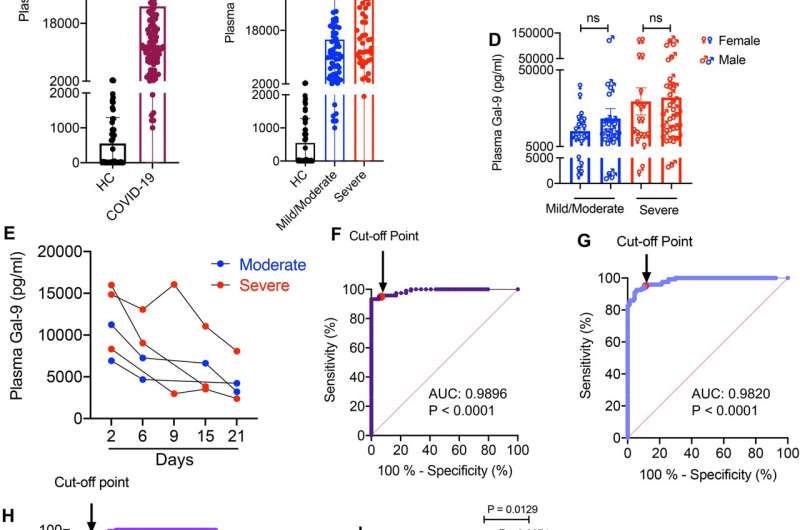Home » Health News »
Understanding the inflammation that causes death in COVID-19 patients

As clinical evidence mounts that the leading cause of death in COVID-19 patients is the dangerous condition known as a cytokine storm, University of Alberta researchers have identified a protein in the blood that could be responsible.
The team found that COVID-19 patients have significantly elevated levels of a protein called galectin-9 in their blood plasma. Perhaps more importantly, they also found a positive correlation between the levels of galectin-9 and pro-inflammatory cytokines released in the blood, which can lead to a cytokine storm.
The research was led by Shokrollah Elahi, associate professor in the School of Dentistry’s Division of Foundational Sciences.
Expanding on his prior work with HIV, AIDS and cancer patients, Elahi and his team analyzed the blood plasma of 120 patients with COVID-19. They found that levels of galectin-9 were substantially higher in those patients than in individuals with HIV and cancer.
“We have reported in the past that galectin-9 levels go up in HIV infection and with some cancers,” said Elahi, who is also a member of the Women and Children’s Health Research Institute and Cancer Research Institute of Northern Alberta.
“However, when we compared the levels of galectin-9 in the COVID-19 patients to HIV and cancer patients, we could easily distinguish the COVID patients based on the galectin-9 levels.”
The findings suggest that galectin-9 levels in the body could be used as a biomarker to diagnose COVID-19 using a patient’s blood, potentially providing another non-invasive tool for COVID-19 testing. The levels could also be used to indicate the severity of the disease, though further study on that aspect is required, Elahi said.
Eye of the storm
The discovery of elevated galectin-9 levels in COVID-19 patients is important because of the positive correlation between the protein and a wide range of pro-inflammatory cytokines.
“Cytokines as small cell-signaling proteins are involved in checks and balances in the immune system; they can turn on or turn off some cells to regulate the immune system,” said Elahi.
“In the context of COVID, the problem is that there is a dysregulation of cytokine production—they are released very quickly in elevated levels. That’s what we call a ‘cytokine storm.'”
Elahi found that galectin-9 is responsible for instructing immune cells to release the pro-inflammatory cytokines quickly in response to COVID-19 infection by binding to immune cells and forcing them to produce the cytokines. Further, as tissues are damaged as a result of inflammation, more galectin-9 is released from the cells—which activates more immune cells and releases more cytokines in a vicious cycle. The resulting cytokine storm damages tissue and organs, causes severe inflammation and can lead to death, Elahi said. Even if patients survive the storm, the dysregulation of the immune system can have ongoing consequences and could be associated with the condition known as post-COVID-19 syndrome or long COVID.
The next step is to develop treatments that block or inhibit the protein, Elahi said. While there are compounds available that could potentially be used, such as lactose or anti-galectin-9 antibodies, currently there are no treatments on the market specifically for blocking galectin-9 in humans.
“We are now looking at expanding our study to a larger cohort of patients, and then working on a proof of concept in animal models,” Elahi said. “What is killing COVID patients is not the virus; it’s the cytokine storm. Therefore, if we can reduce the cytokine storm damage by inhibiting galectin-9, then we can reduce complications, reduce hospitalizations and prevent mortality.”
Source: Read Full Article



